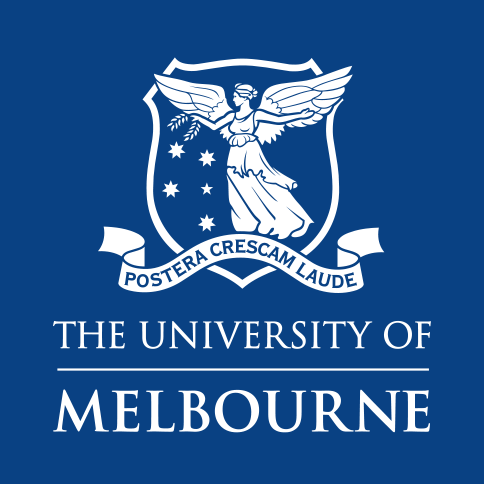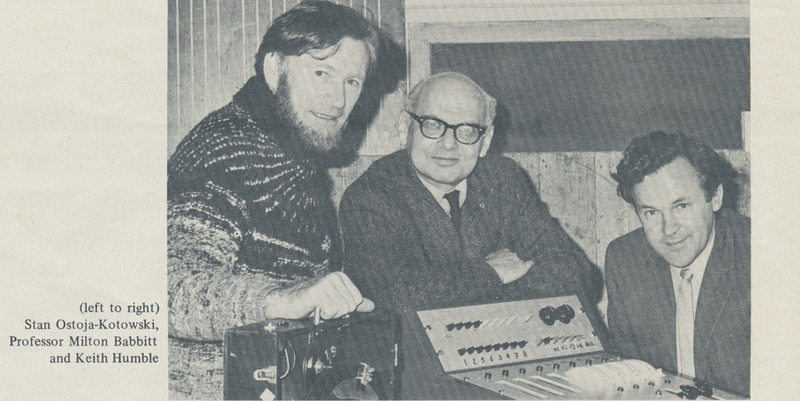Detail from University of Melbourne Gazette, December 1971, p.2
Dublin Core
Title
Detail from University of Melbourne Gazette, December 1971, p.2
Subject
Description
Milton Babbitt, American composer and Professor of Music at Princeton University, was invited as the international expert to the seminar 'The State of the Art of Electronic Music in Australia' at the University of Melbourne in 1971. This photograph, from the University of Melbourne Gazette, shows Babbitt, with local artist Stan Ostoja-Kotowski (left) and Keith Humble (right), in the Grainger Centre.
Babbitt was hired as a consultant composer to work with the RCA Mark II Synthesizer at the Princeton-Columbia Electronic Music Centre. Babbitt was fascinated by the perceptual possibilities of the new world of electronic sound and human interaction.
While Babbitt, was at the 1971 seminar ‘The State of the Art of Electronic Music in Australia’, he gave two extensive lectures on the topic of electronic music. He spoke at length about the unique possibilities of synthesized music. He observed:
“Now you sit in front of the synthesizer, you specify something, you are probably extrapolating from your normal experience of music. You ask for something, you hear it, it may be what you expected but very often it is not because we know so little about the perceptual in music that we are scarcely in a position to extrapolate from the available experience from conventional, traditional instruments. And the wonderful thing about the synthesizer and its only advantage over the computer, its sole advantage, is that you do this with your ear at that moment; in other words, you specify something and then you draw this paper roll by hand under these brushes which scan them and you can listen and you can hear it – if you’ve gotten what you thought you wanted to get. If you don’t, you try again, and you try again, and you try again, on the basis of a combination of experience and hope… As a result a great deal of primary research with regard to how we hear music - not how we hear tones, but the testing both of errors, time order errors in the traditional sense, and simply how we hear music - have been accomplished.”
Babbitt was hired as a consultant composer to work with the RCA Mark II Synthesizer at the Princeton-Columbia Electronic Music Centre. Babbitt was fascinated by the perceptual possibilities of the new world of electronic sound and human interaction.
While Babbitt, was at the 1971 seminar ‘The State of the Art of Electronic Music in Australia’, he gave two extensive lectures on the topic of electronic music. He spoke at length about the unique possibilities of synthesized music. He observed:
“Now you sit in front of the synthesizer, you specify something, you are probably extrapolating from your normal experience of music. You ask for something, you hear it, it may be what you expected but very often it is not because we know so little about the perceptual in music that we are scarcely in a position to extrapolate from the available experience from conventional, traditional instruments. And the wonderful thing about the synthesizer and its only advantage over the computer, its sole advantage, is that you do this with your ear at that moment; in other words, you specify something and then you draw this paper roll by hand under these brushes which scan them and you can listen and you can hear it – if you’ve gotten what you thought you wanted to get. If you don’t, you try again, and you try again, and you try again, on the basis of a combination of experience and hope… As a result a great deal of primary research with regard to how we hear music - not how we hear tones, but the testing both of errors, time order errors in the traditional sense, and simply how we hear music - have been accomplished.”
Creator
Source
University of Melbourne Gazette, December 1971; Grainger Museum Archive 2017/23-4/5
Date
December 1971


